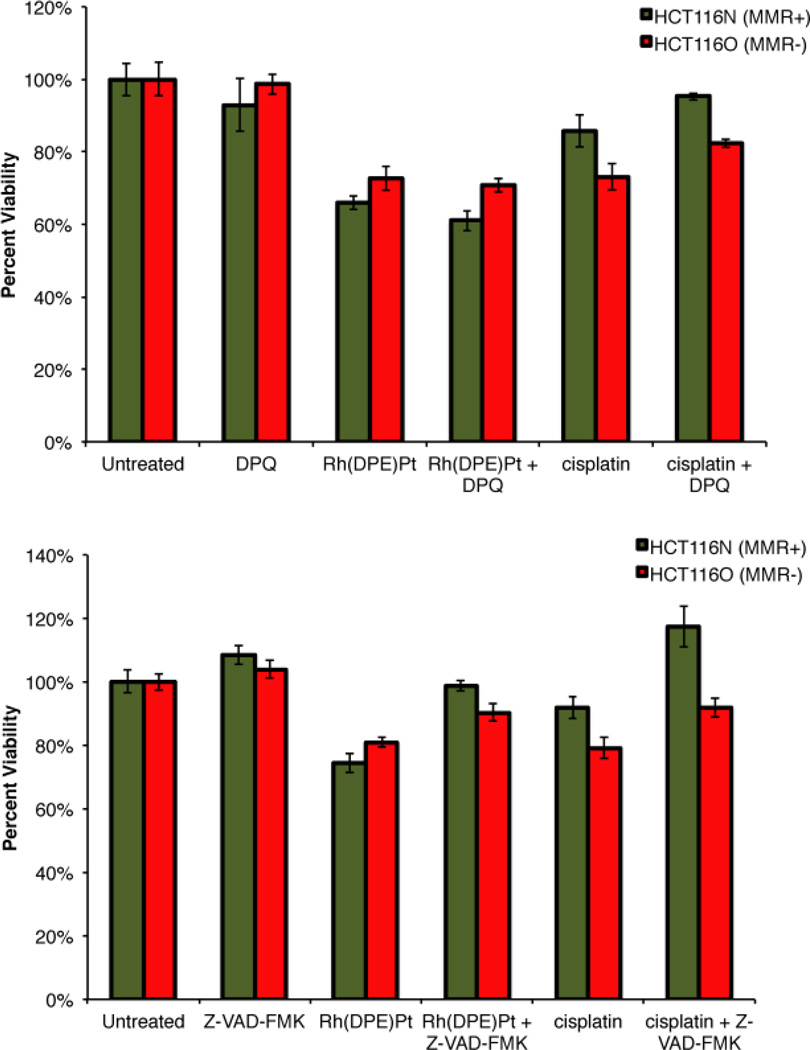Figure 6.
MTT cytotoxicity assay with PARP and caspase inhibitors. Viability is normalized to untreated controls. (Top) Cell viability in HCT116N (green, MMR-proficient) and HCT116O (red, MMR-deficient) cells after 72h treatment with PARP inhibitor DPQ. Treatment with DPQ (50 µM) alone has no effect on cell viability. Likewise, DPQ does not increase the viability of cells treated with [Rh(chrysi)(phen)(DPE-Pt(NH3)2Cl]3+ (“Rh(DPE)Pt,” 5 µM). A modest increase in viability is observed when cells are exposed to DPQ in combination with cisplatin (5 µM). (Bottom) Cell viability in HCT116N (green, MMR-proficient) and HCT116O (red, MMR-deficient) cells after 72h treatment with caspase inhibitor Z-VAD-FMK. Treatment with Z-VAD-FMK (35 µM ) alone has no effect on cell viability. When administered in combination with [Rh(chrysi)(phen)(DPE-Pt(NH3)2Cl]3+ (“Rh(DPE)Pt,” 5 µM), a statistically significant increase in viability is observed in both cell lines. A similar result is observed when capase inhibitor is added in combination with cisplatin (5 µM). These results signify caspase-dependent apoptosis (p < 0.0001 by unpaired two-tailed t-test).

